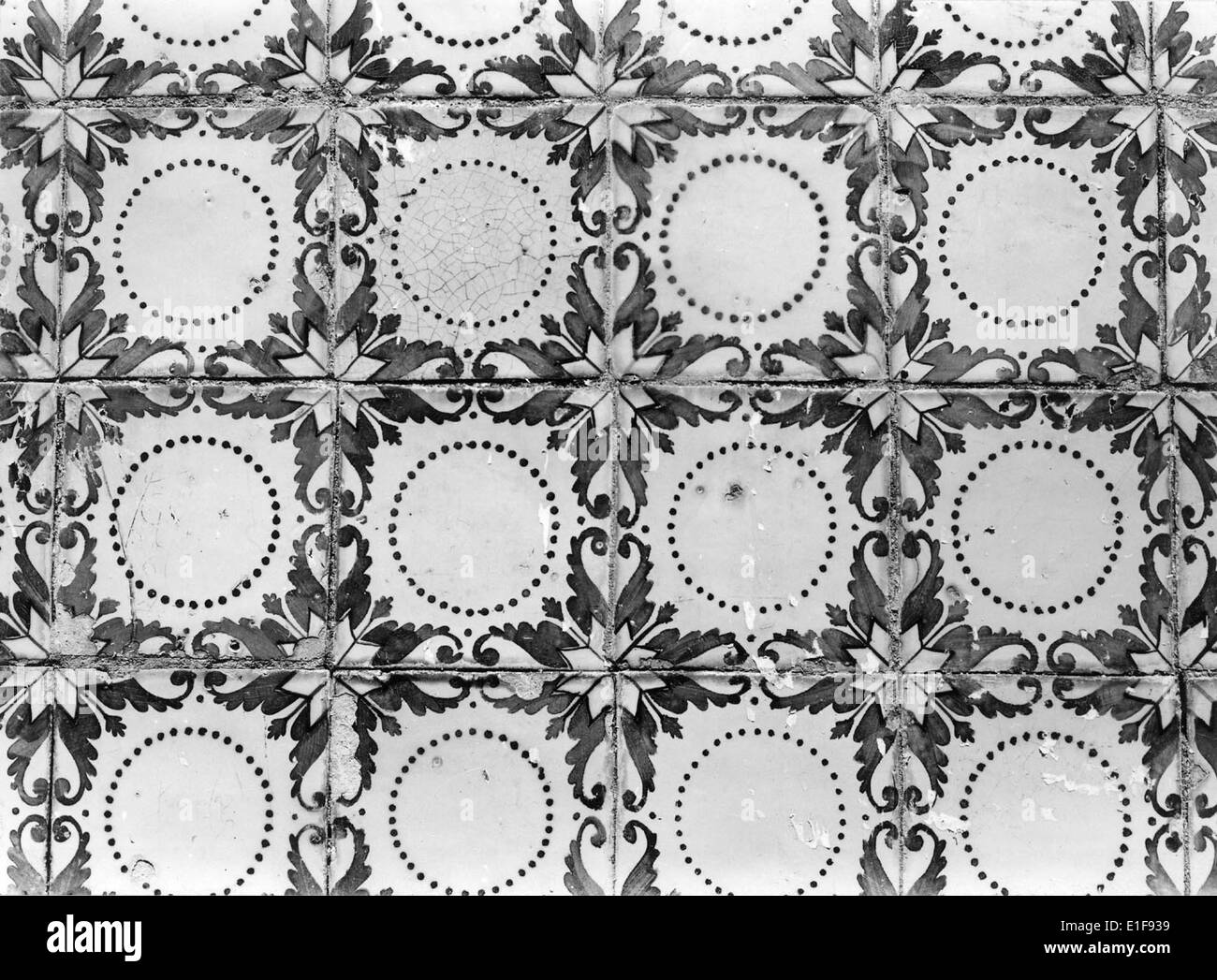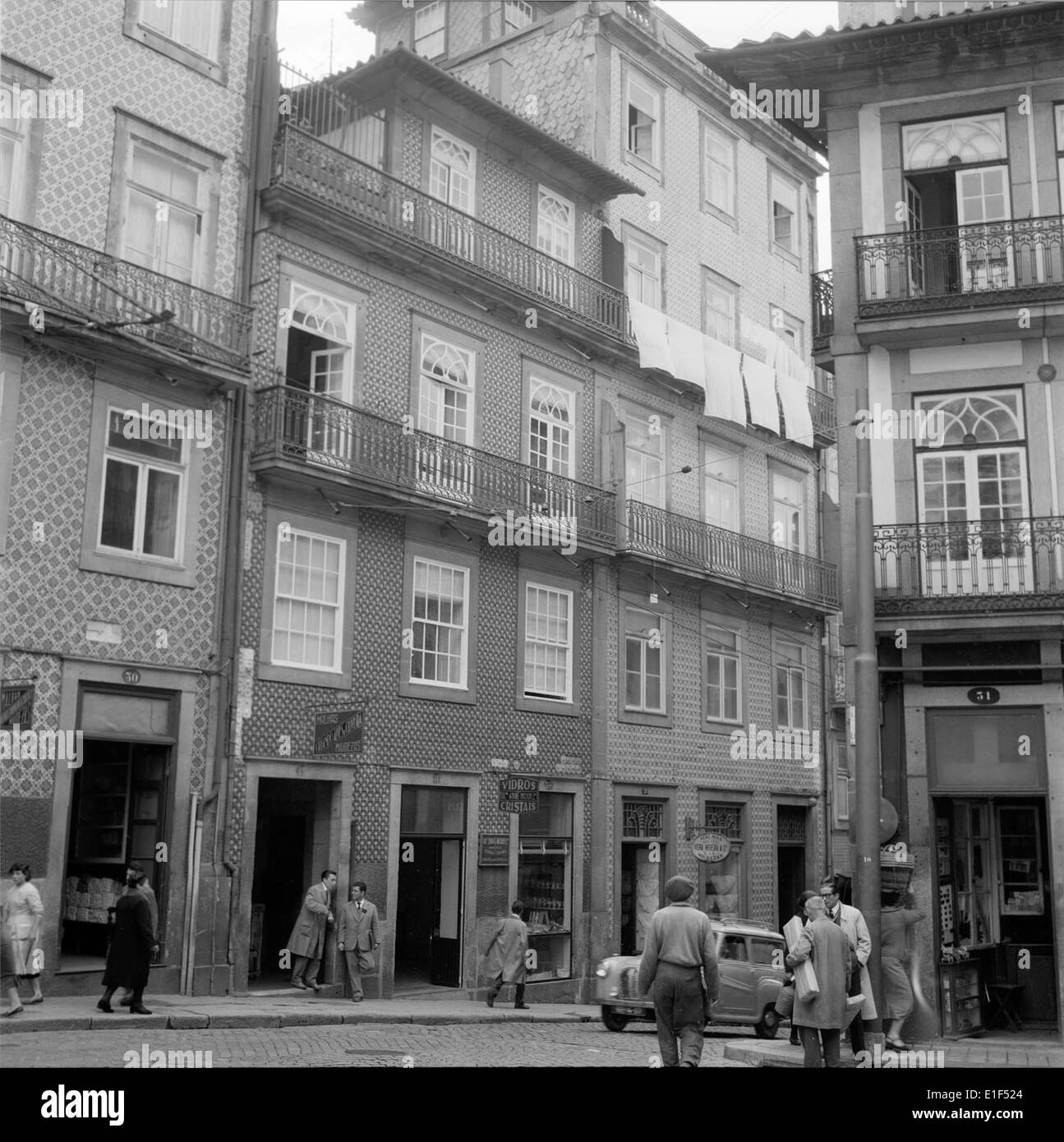Imagine walking through old streets, maybe in a place like Lisbon, and seeing buildings dressed in the most striking patterns of tile work. This is, you know, a common sight, and it tells a story of artistry and long-standing traditions. These ceramic pieces, often with a beautiful sheen, cover the outside walls of many structures, giving them a truly distinct look.
These particular tiles, often called azulejos, are a big part of what makes Portugal so unique visually. They are not just simple decorations; they are a deep connection to the country's past and its artistic spirit. You find them just about everywhere, from grand old homes to little shops, creating a sort of outdoor gallery for everyone to enjoy, so.
When we talk about azulejos that grace the outsides of buildings, we are really talking about "azulejos de fachada." These are the ones that stand out, greeting you as you wander by. They are a very, very distinctive feature of how Portuguese cities look and feel, almost.
- Did Shaq Have A Stroke
- What Happened To Todd Milsap
- How Are Joan And Chock Doing
- Lola Kelly Ripa Daughter
- Clara Spera Ginsburg
Table of Contents
- The Beginnings of These Azulejos de Fachada
- How Did Azulejos de Fachada Become So Widespread?
- What Gives Azulejos de Fachada Their Special Charm?
- Finding Azulejos de Fachada Around Every Corner
- The Appearance of Azulejos de Fachada
- Are Azulejos de Fachada Just for Decoration?
- Where Can One See Azulejos de Fachada?
The Beginnings of These Azulejos de Fachada
The story of these ceramic panels, which we now know as azulejos, goes back a long way, actually. They first came about in places like Spain, and then, later on, they became a very, very big deal in Portugal, starting around the 14th century. At the very start, the word "azulejo" was used to describe something a bit different, more like the intricate mosaic designs you would see from North Africa, but that changed over time, you know.
The artistic style that brought these tiles into being really spread across Portugal after some folks from the Moorish culture arrived in the country back in 711 AD. This was, in a way, a major moment for how art would develop there. They started out in a simpler form, just a little, perhaps not as detailed as what we see today, but the seed was planted, as a matter of fact.
You can trace the idea for these beautiful blue and white tiles, which are a common sight in Portugal, to a lot of different cultures from all over the world. It's not just one single source, but a mix of influences that shaped them. These wonderful examples of tiles go as far back as the 13th century, showing just how long they have been a part of the country's visual identity, so.
How Did Azulejos de Fachada Become So Widespread?
These special tiles are, in a way, deeply connected with Portuguese ways of life. You can see them almost everywhere you look, from the little shops you pop into, to people's private homes, and even grand old palaces. They are on churches, train stations, and, you know, just about every kind of building you can think of, giving a sense of continuity, too it's almost.
Glazed blue ceramic tiles, or azulejos as they are known, are, really, just about everywhere in Portugal. They decorate the twisting paths of the capital, Lisbon, making a simple walk into something much more interesting. They cover the walls of train stations, restaurants, and bars, giving these places a unique character that is hard to forget, apparently.
These ceramic pieces are known as azulejos in Portuguese, and they are, basically, one of the most distinctive art forms you will find in Portugal. They adorn the outside surfaces of city buildings, making each structure a piece of art in itself. This widespread use is what makes "azulejos de fachada" such a defining part of the country's appearance, as a matter of fact.
What Gives Azulejos de Fachada Their Special Charm?
The charm of these tiles comes from a few things, you know. They are often blue and white, which creates a very striking contrast against the stone or plaster of a building. This color scheme, quite naturally, became a hallmark of the style. The way light hits their glazed surface makes them appear bright and quite captivating, almost glowing in the sunlight, so.
Beyond just looking good, these tiles also carry a lot of history and cultural meaning. They are, in a way, deeply embedded in Portugal's story. Every tile, every pattern, can tell a piece of that tale. This connection to the past adds a layer of depth to their visual appeal, making them more than just pretty decorations, is that.
The sheer variety of designs and patterns you can find on "azulejos de fachada" is, really, quite something. Some show scenes from history, others tell religious stories, and many are just beautiful geometric shapes or floral patterns. This diversity means there is always something new to see, even on a familiar street, and stuff.
Finding Azulejos de Fachada Around Every Corner
It's not an exaggeration to say that these facade tiles are a constant presence in Portuguese cities. You might spot them on the side of a small bakery, or on the grand entrance of a government building. They are, you know, truly everywhere, integrating seamlessly into the urban surroundings. This makes wandering through towns a bit like walking through an open-air museum, just a little.
The fact that they are used so widely on the exteriors of city buildings means that "azulejos de fachada" are one of the first things you notice. They give each street and each block its own special identity. It's a bit like the buildings are wearing their finest clothes for everyone to see, really.
Even in less obvious places, like inside some older train stations or certain restaurants, you find these glazed ceramic pieces. They cover large wall areas, creating a very cohesive and visually rich environment. This widespread use speaks volumes about their importance, not just as art, but as a practical and enduring way to decorate and protect structures, so.
The Appearance of Azulejos de Fachada
When you look at "azulejos de fachada," you are often struck by their luminous quality. They seem to catch the light in a special way, making them stand out even on a cloudy day. This brightness is a key part of their visual appeal, giving a cheerful feel to the buildings they cover, you know.
Many of these tiles, as mentioned, come in shades of blue and white, which is a classic combination. This particular color choice became very popular and is now almost synonymous with the art form. However, you can also find them in other colors, depending on the period and the region, adding a lot of visual interest, too it's almost.
The patterns on these tiles can be incredibly detailed, or they can be very simple. Some show intricate scenes with people or animals, while others are abstract geometric designs that repeat across a surface. This variety in pattern, combined with the way they are arranged on a wall, makes each facade a unique work of art, basically.
Are Azulejos de Fachada Just for Decoration?
While the beauty of "azulejos de fachada" is undeniable, they are not, you know, just there for looks. These ceramic pieces also serve a practical purpose. They help protect the walls of buildings from the elements, like rain and sun. This makes them a very sensible choice for exterior surfaces, adding durability as well as beauty, apparently.
The glazed surface of the tiles makes them quite easy to clean, which is a practical benefit for city buildings. This means they can keep their bright appearance for a very, very long time, even in busy urban areas. So, they are not just pretty; they are also a rather smart choice for maintaining a building's exterior, as a matter of fact.
Moreover, the way they are fixed to the walls can help with insulation, keeping buildings cooler in the summer and a little warmer in the winter. This practical aspect, combined with their artistic value, shows that "azulejos de fachada" are a thoughtful blend of form and function, in a way.
Where Can One See Azulejos de Fachada?
You can truly see "azulejos de fachada" just about everywhere in Portugal, but especially in the capital city of Lisbon. They decorate the winding streets there, turning every corner into a discovery. It is, you know, a very common experience to stumble upon a new and interesting tiled building as you walk around, so.
Beyond the streets, these wonderful tiles are found on the walls of many different kinds of places. You will see them on train stations, where they often depict scenes of travel or local life. Restaurants and bars also use them, creating a distinct atmosphere that is very much Portuguese, basically.
They are also used on private homes, making each residence feel special and unique. And, of course, grander structures like palaces and churches often feature some of the most elaborate and historically significant examples of "azulejos de fachada," offering a glimpse into centuries of design and craftsmanship, you know.
- Clara Spera Ginsburg
- Bob Costas Pink
- Cynthia Erivo Alopecis
- Do Meredith And Thorpe Get Married
- River Robertson Now


